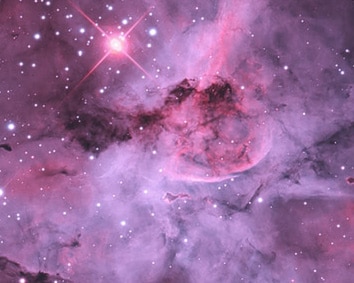Create a free profile to get unlimited access to exclusive videos, sweepstakes, and more!
The Universe Shines Through Humans’ Attempts to Diminish It

This post is for my friend Cindy T. She knows why.
Normally, if you ask me how to do astrophotography, among other things I’ll say you need to have access to dark skies. If you live near a city, the sky glows with reflected light, and that washes out your pictures—check out a photo of Orion I took in 2014 (second photo down in that post) to see what I mean.
But that’s not always true. A lot of the time the glow from city lights comes from lamps that tend to emit a very narrow color of light; the commonly used sodium lamps for street lights tend to be quite yellow, for example. If you have filters that block that light, but still let other colors through, the sky can be yours, even from a city.†
Look no further for proof of this than Terry Robison.* He lives in Melbourne, Australia, under what he calls “a great light dome.” Despite that, with much care and practice, he has taken jaw-dropping photos of deep-sky objects.
Like, for example, the Carina Nebula. Behold!
That spectacular photo is using two filters: one that picks out the light from warm hydrogen (colored red in the photo), and another that sees light from rarefied oxygen (blue in the photo; he did a combination of both to mimic green). The total exposure time overall was 43,500 seconds: more than 12 hours!
The detail is amazing. The Carina Nebula is a ridiculously huge star forming cloud, littered with shock waves, ripples, filaments, and sheets, created as newborn stars blast out winds. The bright star in the lower middle is Eta Carinae, one of the most massive and violent known. It’s actually two monster stars in a tight orbit, and together they blast out more than 5 million times as much energy as the Sun!
It’s unstable and blows out a fierce wind of particles. In the 1840s it erupted so violently it became one of the brightest stars in the sky despite being 7,500 light-years away! That wind slams into and sweeps up material around the star, forming a ring of gas around it. Robison was able to capture that; compare a close up he took to one created using images from the Hubble and Chandra observatories:
In Robison’s image (which I rotated to match the other) you can see a blue ring of material; that’s from excited oxygen atoms in the collision, and outside is a more ragged red ring of hydrogen. That’s clearly visible in the Chandra/Hubble image, too. Amazing.
By the way, he took this with a 25 cm telescope. Incredible.
I strongly urge you to check out his other shots. They’re all stunning.
Oh, the art of science and the science of art. I never get enough of either, but together? Magnificence.
†Or you can do a lot of complicated but totally cool post-processing.
*Correction, May 12, 2015, at 23:45 UTC: I originally misspelled Terry Robison's name. My apologies.


























